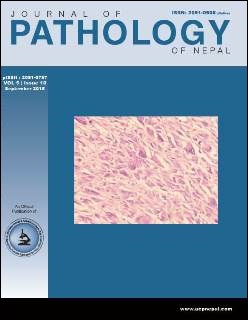Correlation between Robinson’s cytological grading with Modiied Bloom-Richardson histopathological grading for breast carcinoma
DOI:
https://doi.org/10.3126/jpn.v5i10.15659Keywords:
Fine needle aspiration cytology, Robinson’s cytological grading, Modified Bloom-Richardson gradingAbstract
Background: Invasive breast carcinoma is the most common carcinoma in women. Fine needle aspiration cytology is the important part of triple assessment of the palpable breast lump. Robinson’s cytological grading can be done in fine needle cytology smears of breast lump. The aim of this study is to grade breast tumor on cytology according to Robinson cytological grading and to correlate with histopathological grading.
Materials and methods: This prospective study was done in Department of pathology, Bhaktapur Cancer Hospital from 1st April 2014 to 30thjuly 2015. A total of 58 cases of cytologically confirmed breast carcinoma were included in this study and correlated with histopathological findings. Robinson’s cytological grading was done on cytology smears and modified Bloom-Richardson grading was done on histological sections. Correlation between these two grading was done by using spearman’s correlation coefficient.
Results: Cytologically, most common tumor was grade II (62.1%) followed by grade I (19%) and grade III (19%). Histologically, most common tumor was grade II (63.8%) followed by grade III (22.4%) and grade I (13.8%). High concordance rate was found in grade II tumor (80%) with absolute concordance being 65.9%. On cytology, cell dissociation and nuclear margin were determining features (p<0.005). Correlation between cytological grading and histological grading was statistically significant (p<0.005).
Conclusion: Robinson’s cytological grading is the easy grading method that can be done on cytology smears of the breast carcinoma to achieve relevant information regarding aggressiveness of the tumor and to plan for neoadjuvant chemotherapy preoperatively.
Downloads
Downloads
Published
How to Cite
Issue
Section
License
This license enables reusers to distribute, remix, adapt, and build upon the material in any medium or format, so long as attribution is given to the creator. The license allows for commercial use.




